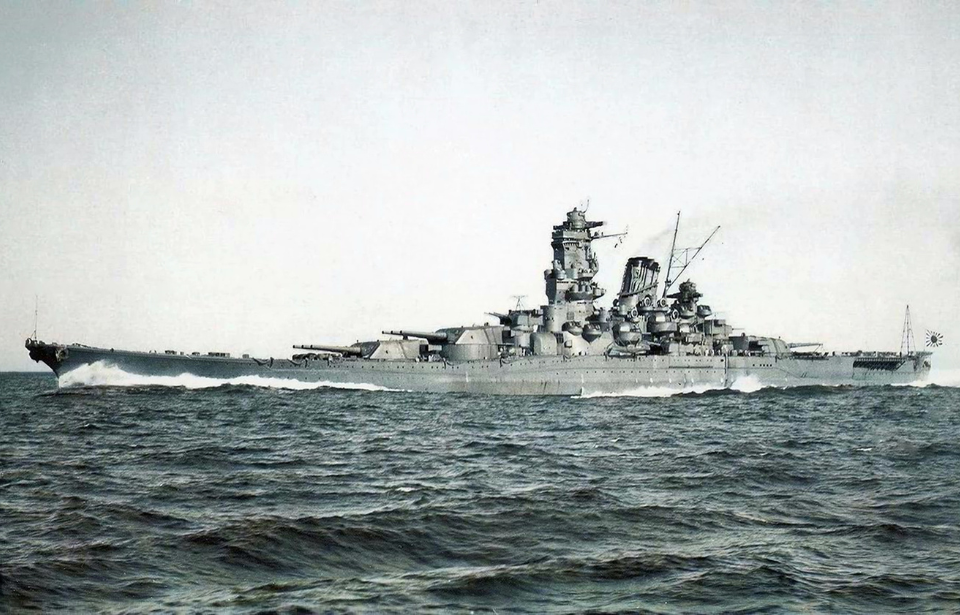As the fighting in the Pacific Theater neared its end in 1945, the Japanese were desperately trying to turn the tides of the Second World War in their favor. Their solution was to develop a new class of battleship that could withstand any attack. However, they soon learned the vessels weren’t as unsinkable as they believed them to be.
Plans for the ultimate battleship
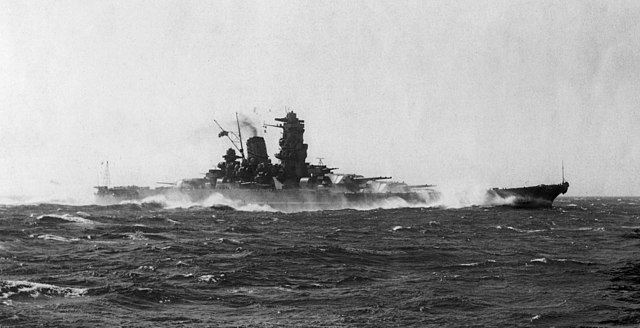
The Japanese government began making plans for the world’s most powerful battleship in October 1934. Officials were planning for an eventual showdown against the United States and knew a quality ship was desperately needed. The country didn’t have the capabilities to match the size of the US Navy’s fleet, but it could out-match the enemy warships.
Japan’s small naval force was the result of the 1922 Washington and 1930 London naval treaties. These placed restrictions on the size and armament strength of the country’s fleet. On December 29, 1934, the Japanese government gave two years’ notice that it would no longer agree to the terms laid out in the agreements, meaning work on a new class of battleship could begin.
Work immediately began on the development of a new warship, led by the Japanese Naval Command Staff and Navy Technical Department. In March 1937, the final plans were approved, and the vessels were ordered into production under the Third Fleet Replacement Program.
Yamato and Musashi
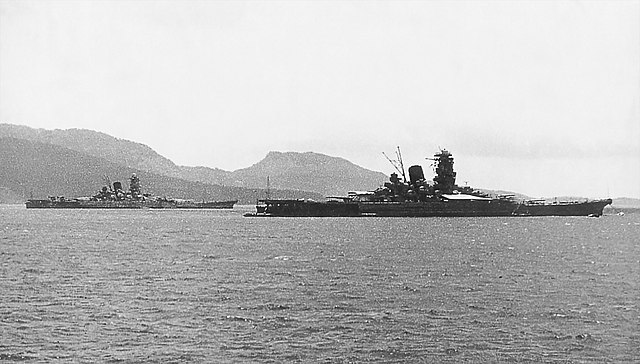
Three ships wound up being built. Their construction was done in camouflaged facilities to keep their development a secret. This ensured the Americans didn’t know about them until they were in direct combat.
On December 16, 1941, the first of the battleships, Yamato, was commissioned, followed by Musashi in August 1942. A third was planned, but her design was altered following the Imperial Japanese Navy’s (IJN) poor showing in the Battle of Midway. Shinano was turned into an aircraft carrier and was later sunk by the USS Archerfish (SS-311) .
The Yamato-class was designed to battle numerous ships at once. At over-800 feet in length and a displacement of about 72,800 tons when carrying a full load, both were quite large. Their engines were powered by four steam turbines connected to four three-bladed propellers, allowing them to reach a top speed of 31 MPH.
The Japanese believed the battleships to be unsinkable. Yamato‘s sides were made of 16-inch thick steel, and her decks had eight-inch thick armor. She also held a slew of weapons, including (as of 1945):
- Three triple 46 cm/45 Type 94 naval guns
- Two triple 15.5 cm/60 3rd Year Type naval guns
- 12 twin 12.7 cm/40 Type 89 naval guns
- 162 Type 96 25 mm dual purpose guns
- Four Type 93 heavy heavy machine guns
The battleship also had two catapults to launch Nakajima reconnaissance aircraft.
Fear of sending Yamato into battle
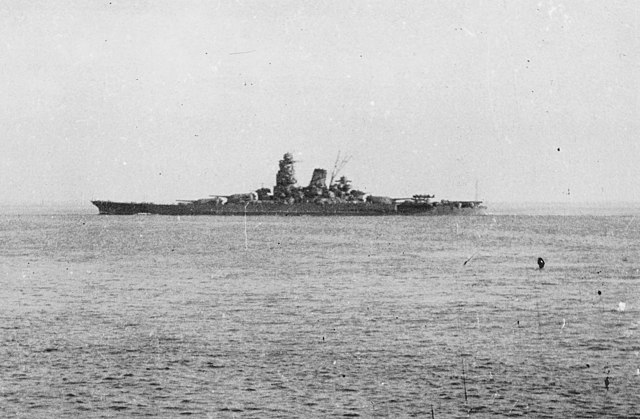
Despite the Japanese government putting so much behind the development of the Yamato-class, the battleship ships rarely saw combat. The reasons were twofold:
- They required a large amount of fuel to run, which Japan didn’t have.
- It was believed the sinking of one or both ships would damage the country’s morale.
Yamato and Musashi were put into combat toward the end of World War II, as the Japanese fleet had dwindled. Yamato was active in the Philippine Sea. The command ship of Adm. Takeo Kurita, she took out a fleet of American vessels off the coast of Samar.
In October 1944, the Japanese began an operation codenamed Shō-Go (“Victory”). The plan was to sink the American fleet as the vessels transited through the Philippine Sea, to prevent an invasion of the Japanese Home Islands. The mission included nearly every ship in the Imperial Japanese Navy’s fleet – and it was an utter disaster.
Things came to a head with the Battle of Leyte Gulf on October 24, when Musashi sank after suffering 17 bomb and 19 torpedo strikes. Yamato received relatively little damage.
Special Sea Attack Force
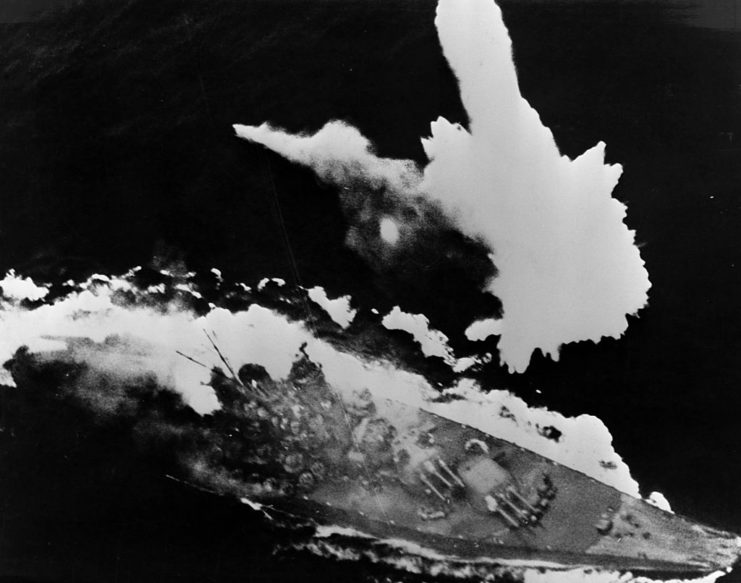
The American forces soon began their advance on Okinawa. The Imperial Japanese Army (IJA) had resorted to kamikaze troops, and the country’s emperor was looking for the Navy to do the same. This prompted Adm. Soemu Toyoda to declare, “The fate of our Empire depends upon this one action. I order the Special Sea Attack Force carry out on Okinawa the most tragic and heroic act of the war.”
This “heroic act” would be an all-out defense via the Bungo Channel on April 8, 1945 – also known as Y-Day. Codenamed Ten Ichi-Go (“Heaven One”), sailors were ordered to sail directly into the American ships en route to Okinawa and cause as much damage as possible. Once on land, they were to fight the Americans on the beach.
There was one twist: no one on the Japanese side was expected to survive. It would be a kamikaze mission via the seas.
Many in the Imperial Japanese Navy’s command felt the mission a waste of human life and fuel. However, they were eventually convinced by Adm. Ryūnosuke Kusaka, who told them the mission would force the Americans to divide their attention between the water and Okinawa.
Sights set on the Japanese
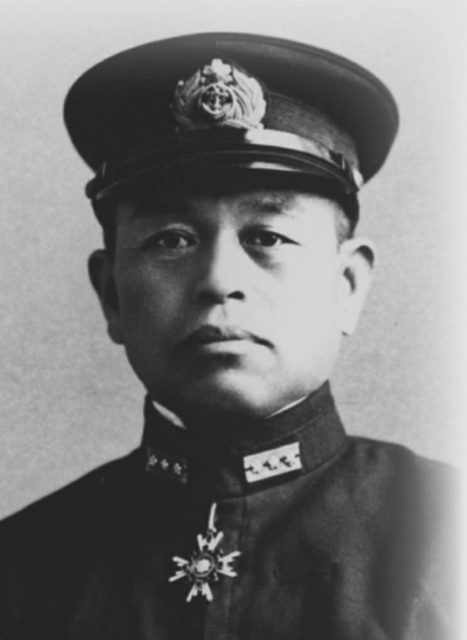
On April 6, 1945, Yamato, the light cruiser Yahagi and eight destroyers – Yukikaze, Asashimo, Suzutsuki, Fuyutsuki, Kasumi, Hamakaze, Isokaze and Hatsushimo – set off for what would be the Imperial Japanese Navy’s last major effort in the Pacific. Yahagi led, with Yamato heading up the rear.
The Americans were on alert for activity. At 9:00 PM, the USS Threadfin (SS-410) radioed the fleet’s location to the Commander, Submarine Forces, Pacific (ComSubPac) in Guam.
At dawn on April 7, the fleet moved into a defensive formation. When 7:00 AM rolled around, Asashimo suffered some engine issues and fell behind. As the morning progressed, Yamato began detecting American aircraft in the skies, including Grumman F6F Hellcats and Curtiss SB2C Helldivers, among others.
The action began at 12:10 PM, signaling the start of an over two-hour battle that would devastate the Japanese.
Bombardment by the US Navy
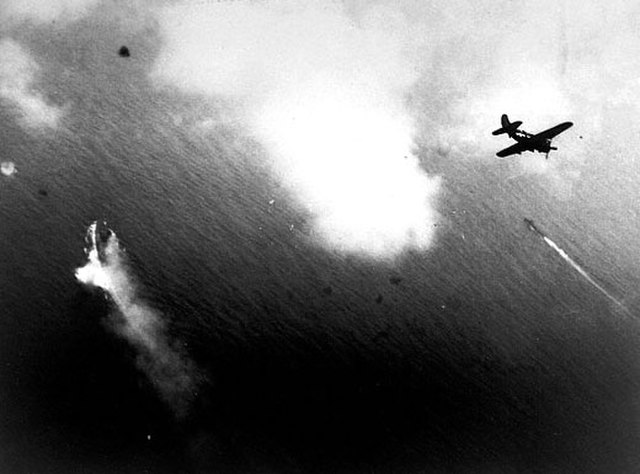
Asashimo was attacked by American aircraft at 12:1o PM, which sunk the destroyer. They then set their sights on the remaining nine ships in the formation, and the crew of Yamato commenced fire at 12:34 PM. Less than 10 minutes later, the battleship was hit by two bombs, knocking the aft secondary battery fire control.
At 12:43 PM, Yamato‘s port bow was struck by a torpedo. Three minutes later, Yahagi received a direct hit to her engine room, losing all power. This was immediately followed by the sinking of Hamakaze, after a bomb hit her deck.
Suzutsuki wasn’t immune to the attack. She was hit by a 500-pound bomb at the starboard, causing her No. 2 gun mount to catch fire. She managed to make it back to Japan, but lost 57 crew members. Thirty-four others were wounded.
This attack was followed by a more coordinated effort that lasted approximately 30 minutes. Yamato was hit by two more bombs, as well as torpedos and bullets, causing additional flood damage. By this time, Adm. Seiichi Itō had realized the mission had failed and ordered the rescue of survivors from the remaining ships.
Many had suffered severe damage, including Yahagi, Kasumi and Isokaze.
Death of Yamato
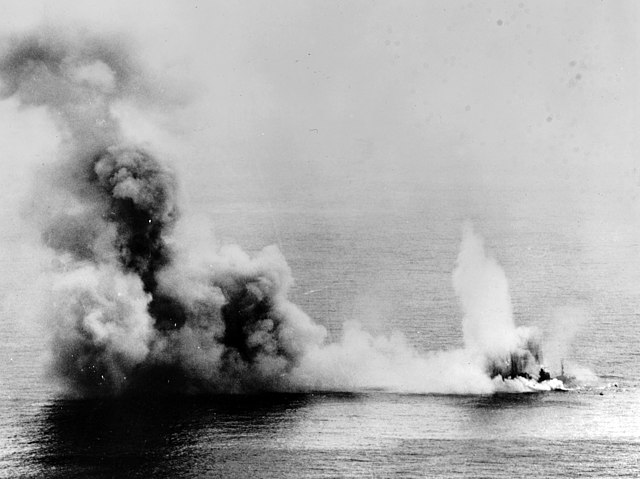
Yamato‘s demise came with the third and final wave of American attacks. Led by Lt. Cmdr. Herbert Houck, an assault leader from the USS Yorkton (CV-10), 43 aircraft from Air Group 9 arrived on the scene at 1:45 PM and decimated the Japanese battleship by deploying torpedoes and bombs.
No longer steerable and filling with water, Yamato capsized. The death blow for her crew was a subsequent explosion. At around 2:05 PM, Yahagi was hit by seven torpedoes and 12 bombs, sinking the cruiser and resulting in the deaths of the majority of her crew.
By the end of the engagement, the Americans had suffered relatively minor losses, with 10 downed aircraft and 14 dead airmen. The Japanese, on the other hand, had been hit hard. Only four ships survived (Fuyutsuki, Suzutsuki, Hatsushimo and Yukikaze) and thousands of sailors lost their lives.
This failure was mirrored by the land attack on Okinawa. While Japan’s kamikaze aircraft were able to launch an air attack on the US naval fleet, they were unable to sink any ships.
More from us: Ernie Pyle: War Correspondent And A GI’s Best Friend
Are you a fan of all things ships and submarines? If so, subscribe to our Daily Warships newsletter!
The sea attack was a demonstration of the Americans’ ability in the air and showed how vulnerable ships could be without air support. It also afforded a glimpse into the lengths the Japanese would go to in order to slow the Allied advance on the Home Islands.
